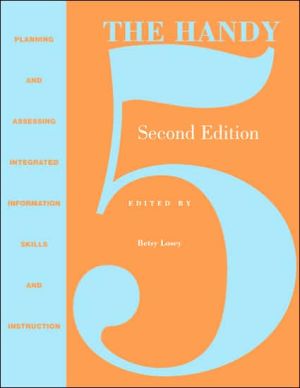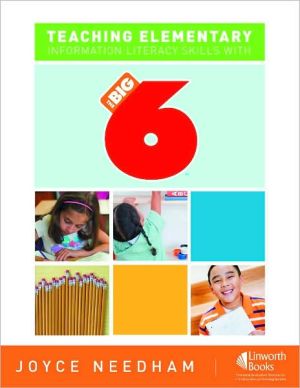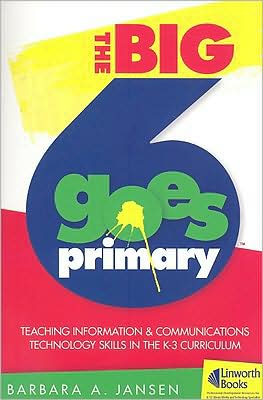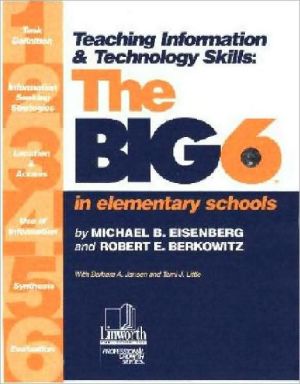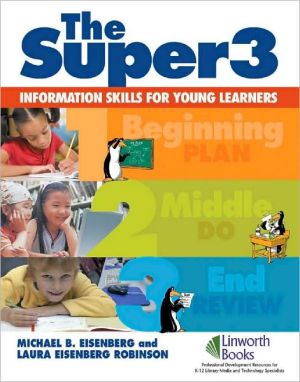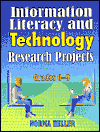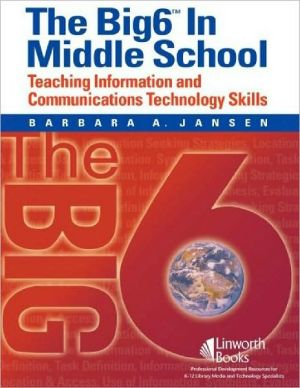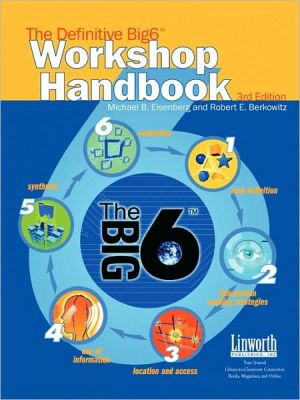The Handy 5: Planning and Assessing Integrated Information Skills and Instruction
Information skills instruction is a fundamental and vital part of K-12 education in the 21st century. The Handy 5, a proven effective model for planning, teaching, and assessing information skills instruction, was written to help library media specialists and teachers to collaborate more effectively in the teaching of information skills. This second edition offers a clear explanation of the model and provides numerous examples of units that have been used successfully and are adaptable for...
Search in google:
The Handy 5 is an effective five-step model that provides a framework for planning learning activities to accommodate frequent and systematic evaluation for the benefit of students' success. VOYA The Handy 5 model, introduced in 2001 by the Kansas Association of School Librarians, is a five-step process that supplies a structure for designing and facilitating library-based activities conducive to frequent assessment of student development. This resource offers tactics and tools to increase a librarian's abilities in accurately assessing student progress. The updated edition includes information on using the Handy 5 principles with students in Pre-K through high school, with a CD containing the print materials needed to implement the program. Content standards and teaching strategies are discussed within the framework of the program, which will prove helpful for both new and experienced school library professionals. Descriptive chapter titles, a detailed table of contents, and a well-designed index make the text easy to navigate. Specific projects and lesson plans are highlighted throughout the resource, helping to ground the reader and make the philosophy of the model come to life in a truly accessible-and practical-way. Most ideas are ready to use but can easily be modified to fit specific needs and student populations. The text starts with a clear objective of giving teacher librarians the tools they need to effectively evaluate student progress, and the authors absolutely fulfill this purpose. This volume will be a welcome addition to the professional resource collections of school librarians, especially those seeking involvement in student assessment, and might also be a good tool for public librarians looking for ways to collaborate with schools and other educational institutions. Reviewer: Elsworth Rockefeller
Part 1 Preface Part 2 Acknowledgments Part 3 Part One: The Model and How to Use It Chapter 4 Chapter 1: Overview of the Book Chapter 5 Chapter 2: Introduction to the Handy 5 Model Chapter 6 Chapter 3: The Handy 5 in Kid Talk Chapter 7 Chapter 4: Using the Model at the Primary Level: The Handy 3 Chapter 8 Chapter 5: Applying the Handy 5 in the Classroom Chapter 9 Chapter 6: The Model as a Collaborative Planning Tool Part 10 Part Two: Why the Model Is Important Chapter 11 Chapter 7: Trends in Education Today Chapter 12 Chapter 8: Using the Model: What Our Researchers Told Us Part 13 Part Three: The Model in Action Chapter 14 Chapter 9: Sample Lesson Plans Part 15 Index Part 16 About the Authors
\ Reference and User Services QuarterlyThis book is ideal for a coordinator or librarian who is looking for a resource that includes a model for collaboration and library skills instruction.\ \ \ \ \ VOYAThe Handy 5 model, introduced in 2001 by the Kansas Association of School Librarians, is a five-step process that supplies a structure for designing and facilitating library-based activities conducive to frequent assessment of student development. This resource offers tactics and tools to increase a librarian's abilities in accurately assessing student progress. The updated edition includes information on using the Handy 5 principles with students in Pre-K through high school, with a CD containing the print materials needed to implement the program. Content standards and teaching strategies are discussed within the framework of the program, which will prove helpful for both new and experienced school library professionals. Descriptive chapter titles, a detailed table of contents, and a well-designed index make the text easy to navigate. Specific projects and lesson plans are highlighted throughout the resource, helping to ground the reader and make the philosophy of the model come to life in a truly accessible-and practical-way. Most ideas are ready to use but can easily be modified to fit specific needs and student populations. The text starts with a clear objective of giving teacher librarians the tools they need to effectively evaluate student progress, and the authors absolutely fulfill this purpose. This volume will be a welcome addition to the professional resource collections of school librarians, especially those seeking involvement in student assessment, and might also be a good tool for public librarians looking for ways to collaborate with schools and other educational institutions. Reviewer: Elsworth Rockefeller\ \
